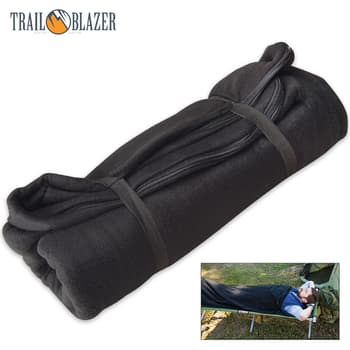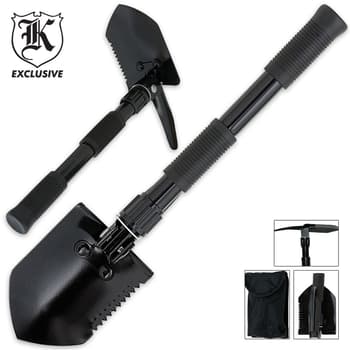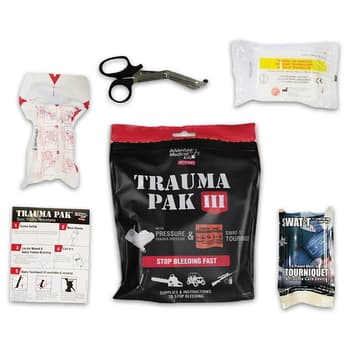You Think You’re Prepared. You’re Not!

By Adelia Ladson
Here’s The Details
Every good Prepper knows that they need food, water, medical supplies and survival tools to make it. When you’re looking at the big picture, don’t forget the small things. Here are a few small but important things to consider.Your Shoes
This makes so much sense that it makes me feel stupid that I haven’t thought of it. If you have, then kudos to you! You and each family member need to have a good pair of walking shoes and socks underneath your beds at all times. If disaster strikes, you may not have a lot of time and, this will ensure that your shoes are within easy reach. You don’t want to face a disaster barefooted. This goes for fire, flood, earthquake tornado or any other SHTF scenario. It’s such a simple precaution to take but so vital.Your Storage
When you’re stocking food and other supplies, are they safe and secure? Are you sure that you are storing them in a place that won’t be susceptible to water damage, extreme temperatures or vermin? It would be a shame to spend so much money and time on your prep to have it destroyed or rendered useless. Bottom-line. You need to invest in good, air, vermin and water-tight containers. If your prep is just placed on shelves in your garage, utility shed or in your home, you’re making a big mistake. They really need another level of protection, especially, food items that aren’t in cans. Even your medical supplies need to be stored in the containers. Also, if you don’t have a fireproof box or safe to store your important documents in, you need to go get one now. Disasters can come in a variety of forms but the key to surviving is having what you need. Treat your supplies with the same care that you treat your other valuables.Your Survival Tools
There are a lot of survival equipment and tools out there for you to invest in that will definitely benefit you like a reliable emergency radio, alternate light sources and water filtering systems. But you are SOL when SHTF if they don’t work. Do not buy items and leave them unopened in their boxes. Believe it or not, there are people out there who buy and store survival tools away without a second look. You need to try out every piece of equipment you buy and if it’s something that has parts that could wear out, get extra parts for it. This goes for things like replacement flashlight bulbs and extra filters for your water filtering system.
This leads into the essential fact that you need to know how your equipment and your tools actually work. Even if it’s something as simple as an axe, take it out and practice using it. If you’ve never used an axe to split wood, you’ll find that it’s not quite as easy as it looks. If you haven’t actually used a firestarter to start a fire, you won’t just magically know how to do it in an emergency. You can read all of the survival manuals you want but there is nothing that substitutes for actually putting them into practice. You don’t have to be a hard-core wilderness survivalist, but you need to make absolutely sure that you know how to use the gear you have.
Your Bug-Out Bag
Now, let’s talk about your bug-out bag. Even if you’re preparing to shelter-in-place, you need to have a bug-out bag packed in case you do have to leave. And, yes, I do know that, for the most part, I’m preaching to the choir. Just thought it should be reiterated for those who are new to prepping. I’m not going to get into the necessities that go in your bug-out bag. What I want to point out are a couple of items that you might not have thought of.
You need to include a picture of every member of your immediate family. If you get separated, then you have a photo of them to show people to help you find them. If you have a family picture, it needs to be as current as possible. It’s important that family members look as close to how they look in the photograph. School pictures are great to use for your kids but don’t forget to change them out from year to year.
You also need to pack a knife sharpener. It doesn’t have to be some fancy deal, it can just be a good sharpening stone, but you need one. That survival knife in your bug-out bag is not going to stay sharp forever. You don’t want to have a knife that is too dull to perform what you need it to do. Once again, a sharpener won’t take up much room in your bag, but it is a necessity that you can’t go without.
Two handy repair tools that you need to have are duct tape and super glue. Everyone knows that the heavy-duty, waterproof tape has tons of uses from patching shelters and securing things to first aid applications and makeshift handcuffs. Super glue is for those necessary permanent repairs that you need to make on survival tools and gear. In a pinch, it can also be used to close wounds.
You might be surprised but chapstick will be a very useful survival tool. It has more applications than just lip protection. It can be used for first aid on small cuts to stop bleeding and to protect scrapes from the elements so that they’ll heal faster. As lubrication, you can use it on stuck zippers and make them more water-resistant, reduce friction on moving parts in tools and help keep knife blades from rusting. Last, you can rub chapstick on any kind of fire tinder to make it catch easier.
Finally, you need to include a deck of playing cards. You have to give your brain an outlet aside from day-to-day survival and face it, at some point, there’s a distinct possibility that electronics may not work anymore. There will be down-times and maybe even long hours of just waiting. With a deck of cards, you have endless options of entertainment, whether you play Solitaire or Go Fish with your family. A deck of cards is small and wont’ take up a lot of room in your bag or pack and you will find their value well worth it.



